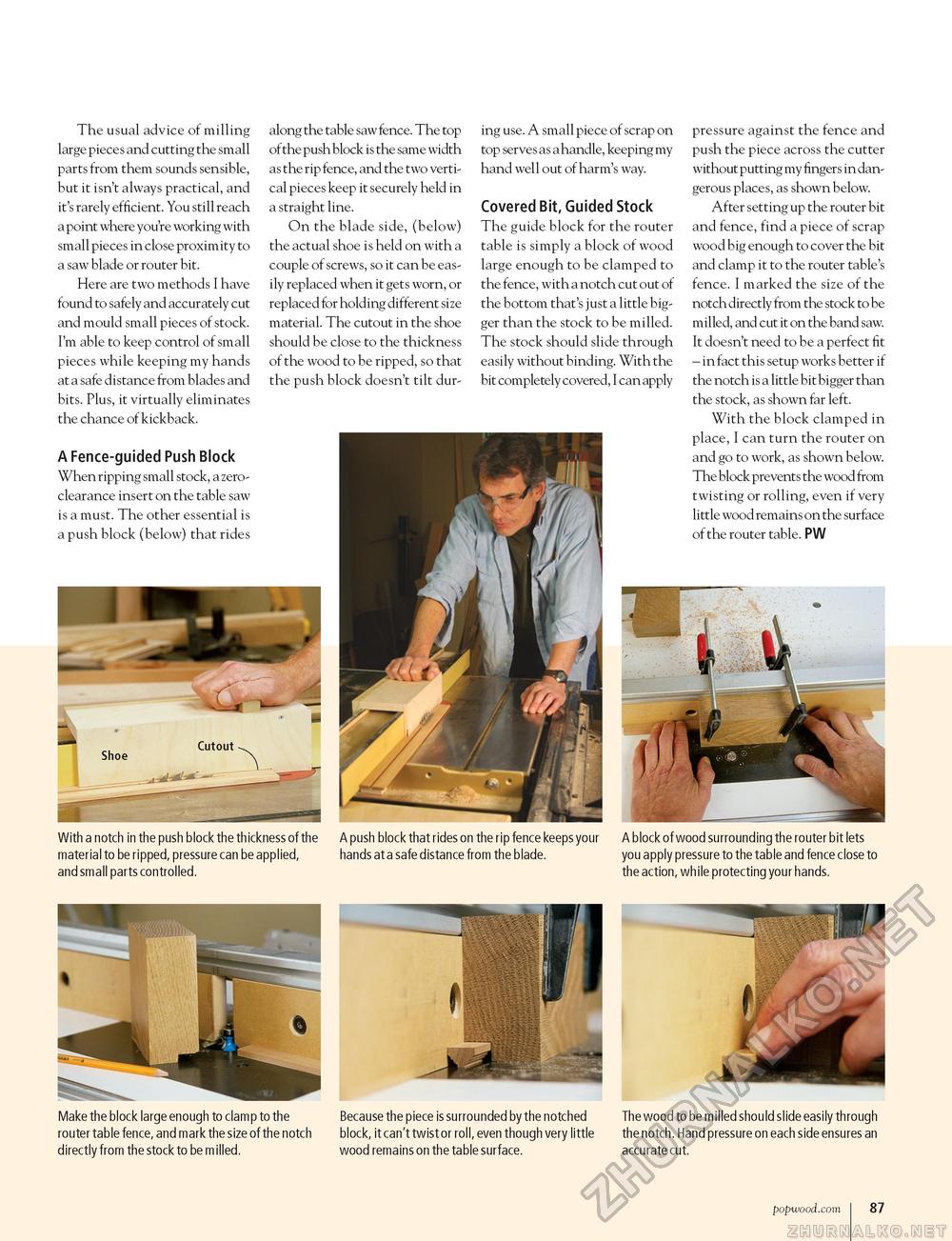Popular Woodworking 2004-12 № 145, страница 82
The usual advice of milling large pieces and cutting the small parts from them sounds sensible, but it isn't always practical, and it's rarely efficient. You still reach a point where you're working with small pieces in close proximity to a saw blade or router bit. Here are two methods I have found to safely and accurately cut and mould small pieces of stock. I'm able to keep control of small pieces while keeping my hands at a safe distance from blades and bits. Plus, it virtually eliminates the chance of kickback. A Fence-guided Push Block When ripping small stock, a zero-clearance insert on the table saw is a must. The other essential is a push block (below) that rides along the table saw fence. The top of the push block is the same width as the rip fence, and the two vertical pieces keep it securely held in a straight line. On the blade side, (below) the actual shoe is held on with a couple of screws, so it can be easily replaced when it gets worn, or replaced for holding different size material. The cutout in the shoe should be close to the thickness of the wood to be ripped, so that the push block doesn't tilt dur ing use. A small piece of scrap on top serves as a handle, keeping my hand well out of harm's way. Covered Bit, Guided Stock The guide block for the router table is simply a block of wood large enough to be clamped to the fence, with a notch cut out of the bottom that's just a little bigger than the stock to be milled. The stock should slide through easily without binding. With the bit completely covered, I can apply pressure against the fence and push the piece across the cutter without putting my fingers in dangerous places, as shown below. After setting up the router bit and fence, find a piece of scrap wood big enough to cover the bit and clamp it to the router table's fence. I marked the size of the notch directly from the stock to be milled, and cut it on the band saw. It doesn't need to be a perfect fit - in fact this setup works better if the notch is a little bit bigger than the stock, as shown far left. With the block clamped in place, I can turn the router on and go to work, as shown below. The block prevents the wood from twisting or rolling, even if very little wood remains on the surface of the router table. PW With a notch in the push block the thickness of the material to be ripped, pressure can be applied, and small parts controlled. A push block that rides on the rip fence keeps your hands at a safe distance from the blade. A block of wood surrounding the router bit lets you apply pressure to the table and fence close to the action, while protecting your hands. Make the block large enough to clamp to the router table fence, and mark the size of the notch directly from the stock to be milled. Because the piece is surrounded by the notched block, it can't twist or roll, even though very little wood remains on the table surface. The wood to be milled should slide easily through the notch. Hand pressure on each side ensures an accurate cut. popwood.com 101 |








